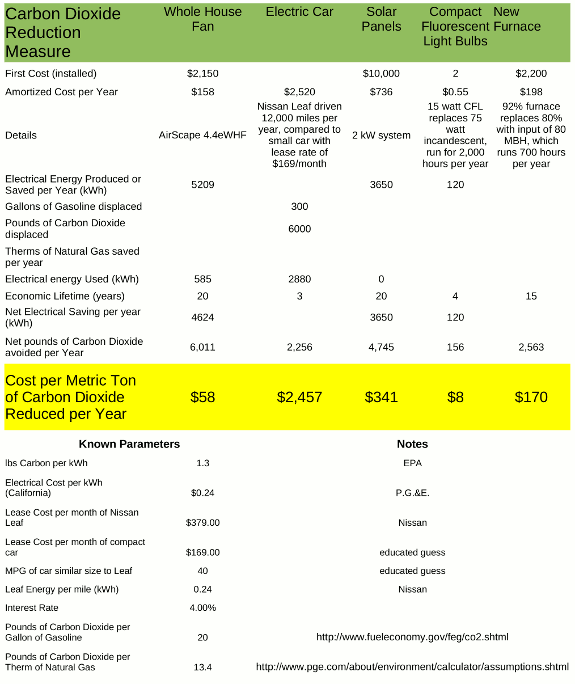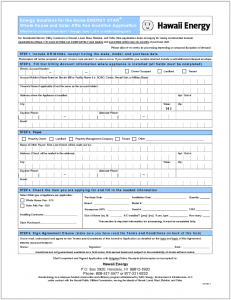We have (at least) two huge problems facing us.
-
Climate Change (too much CO2 is being emitted)
-
No Money (we’re all in debt)
Logically, we should spend our limited resources to the best effect. So, what is the best bang for our buck ? The parameter to measure is Tons of Carbon Dioxide (avoided) per Dollar…. the lower the better. So, here are a few of the common things we can do to reduce energy usage. The spreadsheet shows most of the calculations (contact me if you want to know more details), but what is missing is the usual energy savings return on investment. This figure is all about environmental good. It just so happens that environmental good is good for your pocketbook.
So, please let’s spend our money wisely. Hint: Electric cars are cool (not as cool as pluggable hybrids), but they are not the best way to spend our money if we want to reduce carbon dioxide.
* There are many other energy and carbon dioxide reducing strategies not mentioned here.




